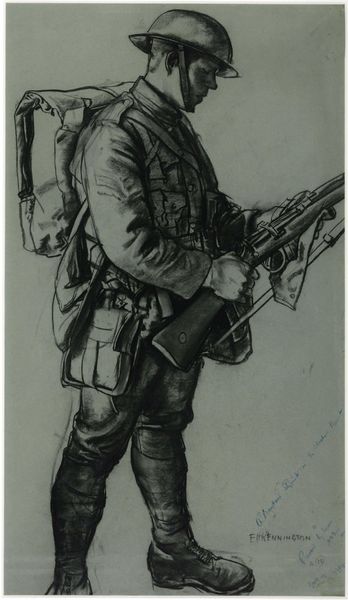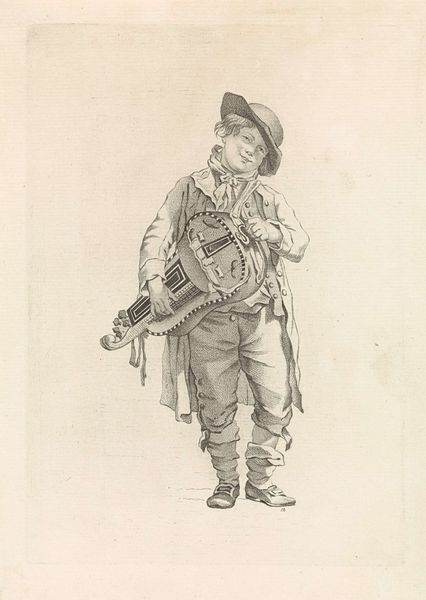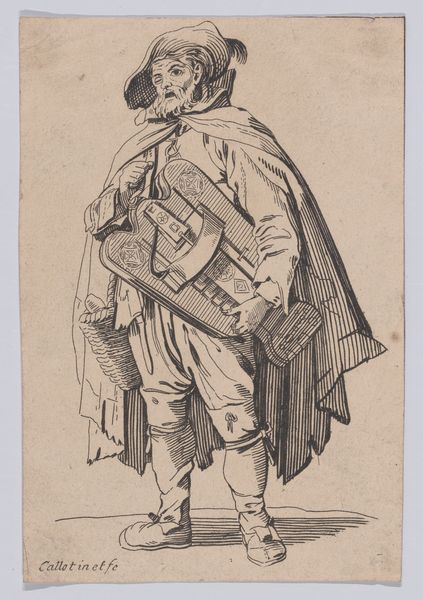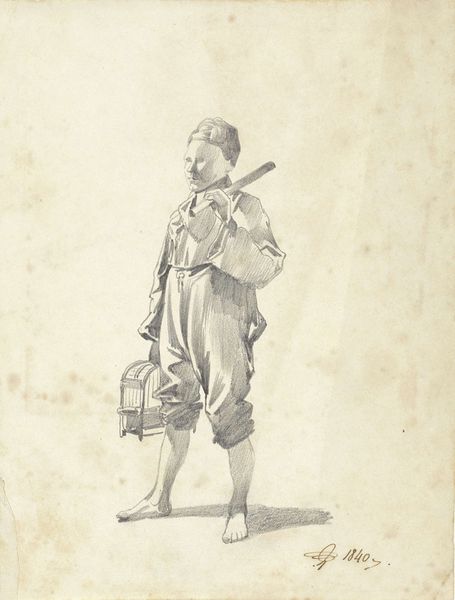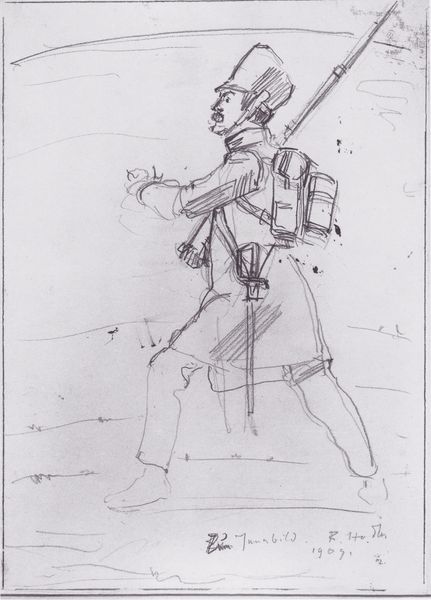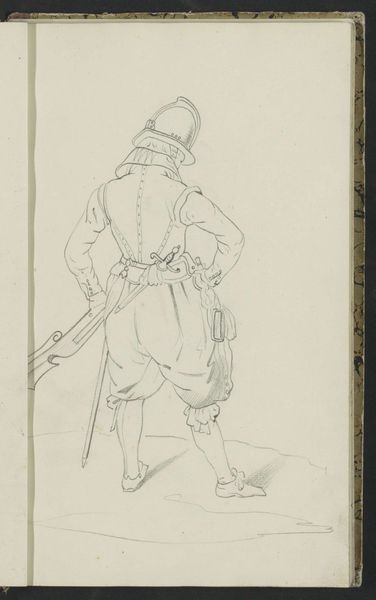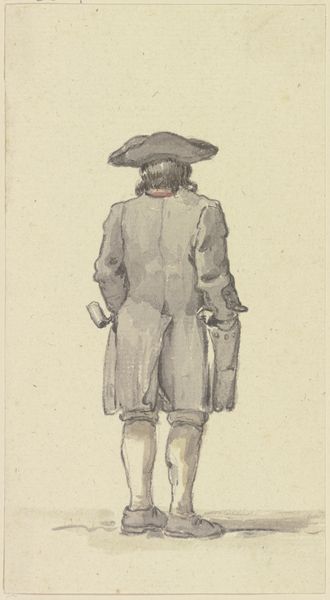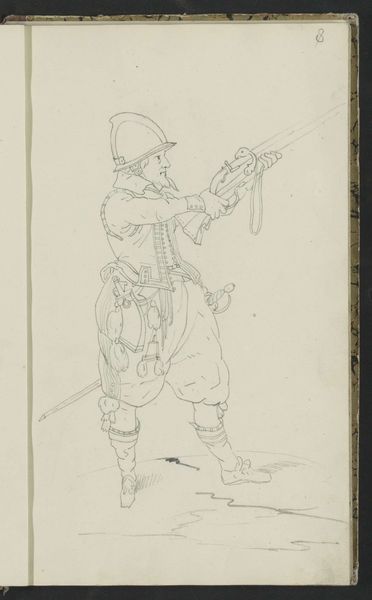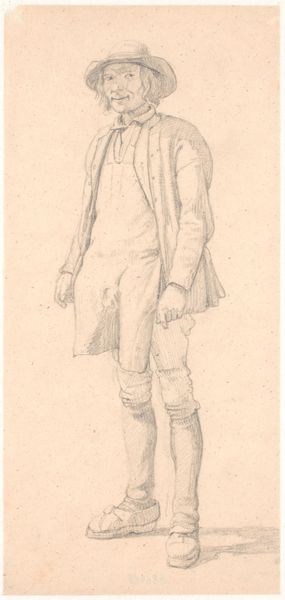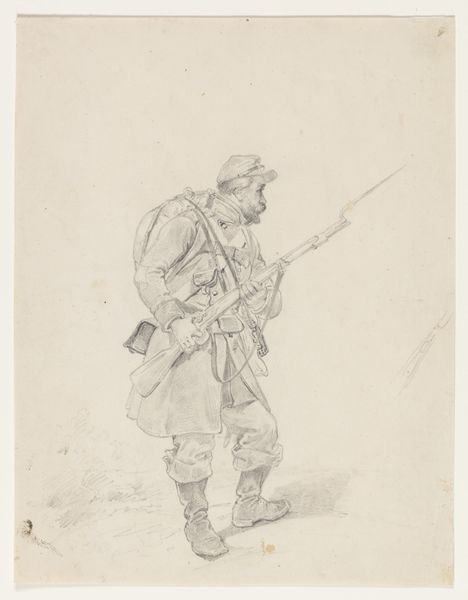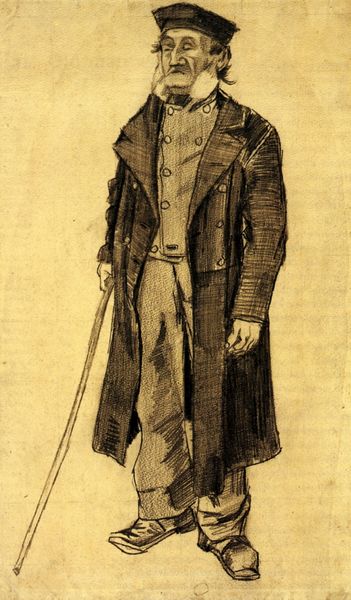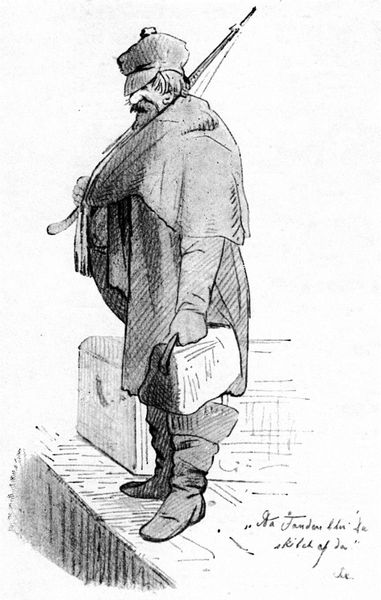
drawing, pencil
#
portrait
#
drawing
#
pencil sketch
#
pencil drawing
#
pencil
#
expressionism
#
realism
Copyright: Public domain
Curator: Let’s take a look at Théophile Alexandre Steinlen's "Permissionaire tenant une canne," created in 1916. This portrait, rendered in pencil, depicts a soldier standing with a cane. What strikes you first about it? Editor: There's an immediate weariness about him. You see it in the droop of his shoulders and the shadow across his face. It suggests exhaustion but also, maybe, disillusionment. Curator: Indeed. The visible pencil strokes contribute to this. Note the textural variations achieved through line weight and density, especially in delineating his clothing and the cane, elements functioning formally to stabilize the composition. Editor: Absolutely, and considering the context of 1916, during the height of World War I, the piece speaks volumes about the individual experiences within that larger conflict. His tattered clothing, that very basic walking stick. It's a statement about class and access, about the disparities within the war effort. Curator: Perhaps. However, viewing the lines and shapes irrespective of external circumstances gives insight too. For instance, how the overall lightness of the coat contrasts with the darker tones of his face and beard, creating a focal point—a tension that underscores the image’s psychological depth. Editor: But we can't ignore the biographical context either. Steinlen was known for his social realism. Seeing his artwork only as a network of lines risks neutralizing its potent political critique and engagement with human suffering during wartime. It demands intersectional analysis with politics, gender and socio-economic inequalities. Curator: It's undeniable that biographical details enrich the interpretation. Yet, stripping away those layers lets one concentrate on its enduring qualities—the very framework that makes the emotional expression so palpable. Editor: I agree it holds value, I’m simply arguing for it being a partial interpretation of such historical work. He doesn’t merely hold a cane; he *clutches* at the support that echoes the supports lacking elsewhere in his world, the injustice and absurdity of his socio-political climate during times of conflict. Curator: It’s a compelling and necessary sociohistorical reading that adds yet another dimension. For me, I'll return to Steinlen’s use of subtle, expressive lines creating this immediate experience for me. Editor: Ultimately, its historical and social significance stays resonant today, speaking directly to our contemporary experience in uncertain times.
Comments
No comments
Be the first to comment and join the conversation on the ultimate creative platform.
